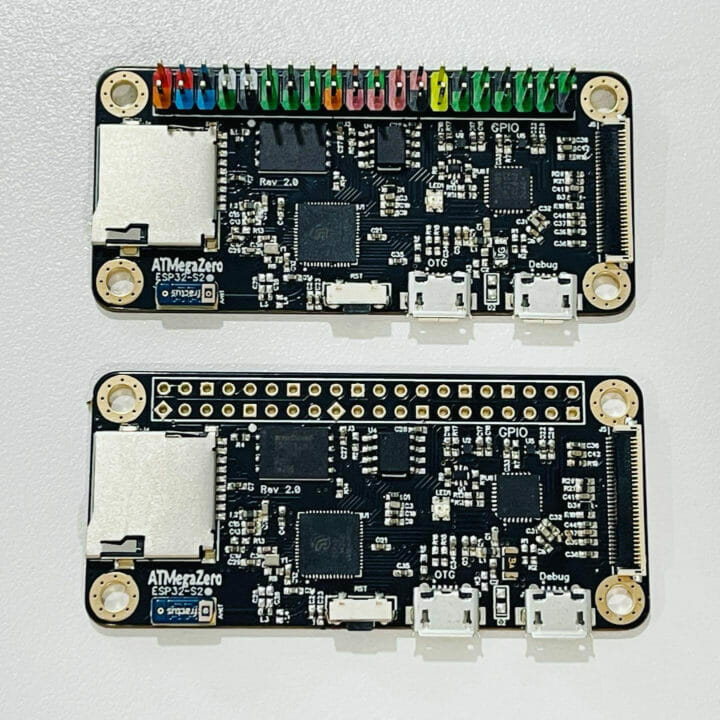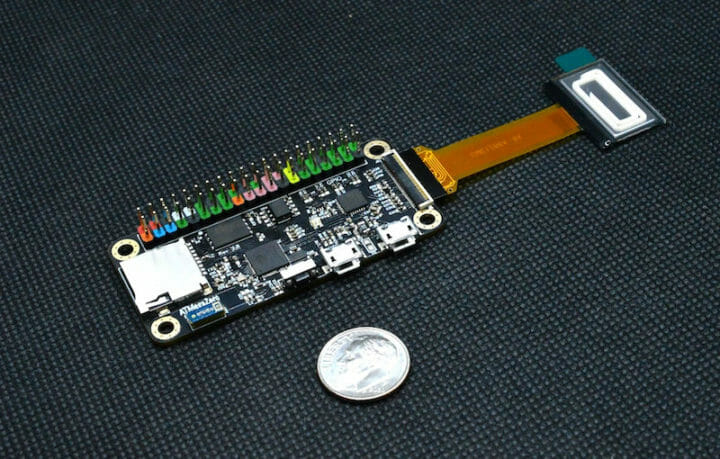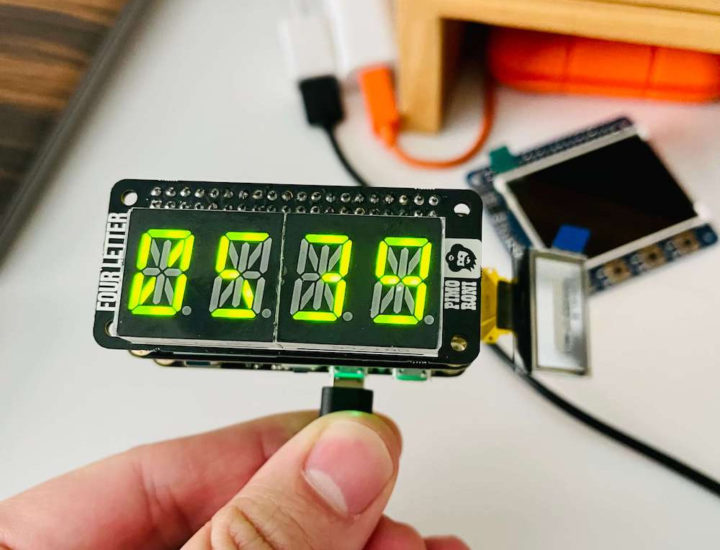EspinalLab ATMegaZero board was introduced last year with Raspberry Pi Zero form factor, the Arduino Leonardo compatible, 16 MHz Microchip ATmega32U4 microcontroller, and a connector for an optional OLED display.
The company is now back with an update following the same form factor with ATMegaZero ESP32-S2 board equipped with a more powerful ESP32-S2 single-core processor @ 240 MHz with WiFi connectivity, and most of the same features, including OLED display support, plus a micro USB OTG port and an RGD LED.
ATMegaZero ESP32-S2 board specifications:
- WiSoC – Espressif Systems ESP32-S2 single-core processor @ 240 MHz with WiFi
- RAM – 8MB PSRAM
- Storage
- MicroSD card
- 256Mbit (32MB) SPI Flash (note: only 16MB can be used for now due to firmware limitations)
- Display – 32-pin OLED display port compatible with 30-pin SSD1306 and SH1106 based displays
- Wireless Connectivity – 2.4 GHz WiFi 4 up to 150 MHz with 3D antenna
- USB – 1x Micro USB port for power and programming, 1x Micro USB OTG port
- Expansion – 40-pin Raspberry Pi-inspired GPIO header with UART, SPI, I2C, analog input signals
- Misc –
4x LEDs, RGB LED, reset push-button - Power Supply – 5V via micro USB port
- Dimensions – 65 x 30mm
- Weight – Around 43 grams

The board ships with a colorful 2×20 header that you’d need to solder yourself. ATMegaZero ESP32-S2 can be programmed with CircuitPython or the Arduino IDE, and is suitable for home automation, IoT, robotics, or wearables.
However, note that it does not come with the LiPo battery support as seen in some other ESP32-S2 boards such as Unexpected Maker TinyS2 or Olimex ESP32-S2-DevKit-LiPo, so it may not be optimal for the wearable use cases.
The Raspberry Pi Zero form factor can be handy, as it allows the use of RPi Zero accessories like the Pimoroni Four Letter pHat as shown above.
Just like its predecessor, ATMegaZeo ESP32-S2 is offered on GroupGets, and for the same $24.99 price tag, not including shipping.

Jean-Luc started CNX Software in 2010 as a part-time endeavor, before quitting his job as a software engineering manager, and starting to write daily news, and reviews full time later in 2011.
Support CNX Software! Donate via cryptocurrencies, become a Patron on Patreon, or purchase goods on Amazon or Aliexpress






